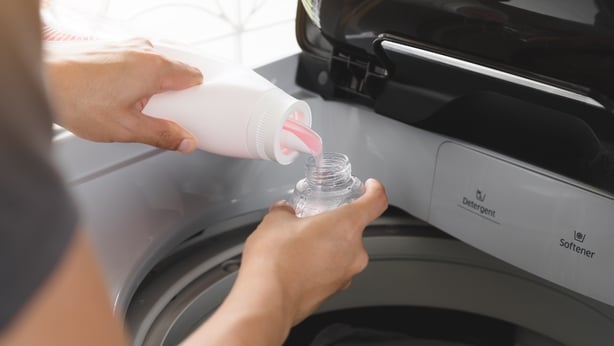Monaghan GP Dr Illona Duffy talks to Claire about the skin condition scabies, how to recognise it, and what to do if you get it. Listen back above.
Of all the uninvited guests to make your life hell, a human parasite has got to be one of the worst ones imaginable. Most of us don't like to think about the fact they exist at all, but if you’re unlucky enough to become infected with scabies mites, they can be a nightmare to get rid of.
Claire Byrne spoke to Monaghan GP Illona Duffy to find out more about the itchy skin condition and the steps you need to take to banish the mites from your home and anywhere else they have taken up residence.

Scabies is an itchy skin condition caused by tiny mites who burrow under the skin and start reproducing like mad once they get there. A diagnosis can be delayed as the mites get settled in and start replicating for several days before you notice anything. Dr Duffy says it’s only when the eggs start to hatch that the scratching begins, and that’s when people end up in the doctor’s surgery:
"10 to 15 days later they become adults and that’s when they create an allergic reaction in your skin. So after becoming infected with them it takes a few weeks before actually you may even start getting the itch. So they're there and unfortunately they’re replicating during that time."
Dr Duffy says she takes a detailed history from each patient on how the infection has developed. She says that lack of sleep is one of the indicators a person may have scabies:
"People will present usually with an itch and they may have a rash. But often the rash isn't the biggest thing at the beginning. It starts with my looking really closely at people and taking history from them; so we want to see people who are saying, 'I’m actually so itchy at night I feel like I'm nearly going to tear the skin off myself.’"

A doctor will also be looking for tell-tale signs on the surface of the skin, Illona says.
"We’ll look at your hands, because the hands are a common area, maybe between the fingers, where we may see these little burrows. The burrows are kind of silvery or white, slightly raised lines. They're really thin, they’re thread-like."
The condition is treatable and you can beat the mites with medication, patience and a washing machine. Dr Duffy says it’s important to treat everyone you have close physical contact with; as well as everyone else who shares your home or living space.
The mites can't live independently away from humans, but they can survive for days in bedlinen, clothing and towels - even without human contact. This means they can be easily transmitted to people you live with.
For medical advice, always consult your own GP - here’s a summary of the tips Illona shared with Claire:
- Treat everyone you are in close contact with.
- Cover yourself head to toe in the lotion prescribed by your doctor.
- Leave the lotion on for at least 12 hours.
- Wash ALL home textiles like bedclothes and towels in a hot wash that’s at least 50 degrees.
- Wash ALL the clothes worn recently by all concerned in a hot wash - 50 degrees or hotter.
- Treat everyone with lotion again a week later.

Basically repeat these steps for as long as it takes to banish the bugs, Dr Duffy says. Most people will make a full recovery, but untreated, scabies can have nasty consequences for vulnerable people, Illona says:
"Those who are immunocompromised and perhaps who are on medications lowering their immunity, those who are elderly and those who are very young can develop another form called Norwegian Scabies so that tends to be really crusted scabies and they tend to have a lot more of the bugs on their skin than the normal person with scabies."
Scabies is on the rise at the moment and cases here last year were three times the level of those reported in 2022. The situation in the UK has been described as potentially a major threat to public health. Dr Duffy says she’s seen a lot of it recently in her practice too:
"In the last year to 18 months I've never seen as much in my career of scabies."
You can find more information on the HSE website here.
Listen back to Today with Claire Byrne on the RTÉ Radio App and find more great content from the show here.


